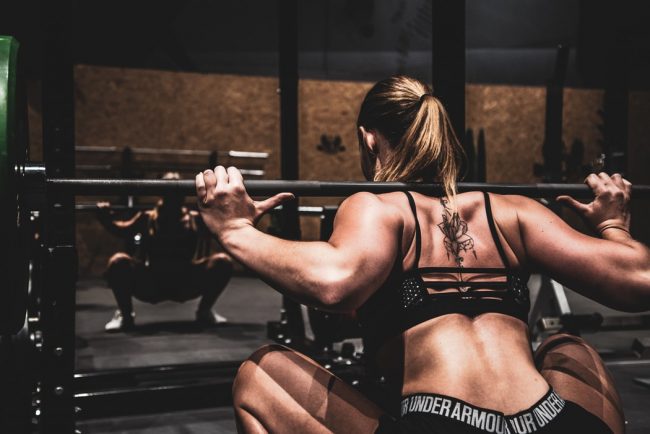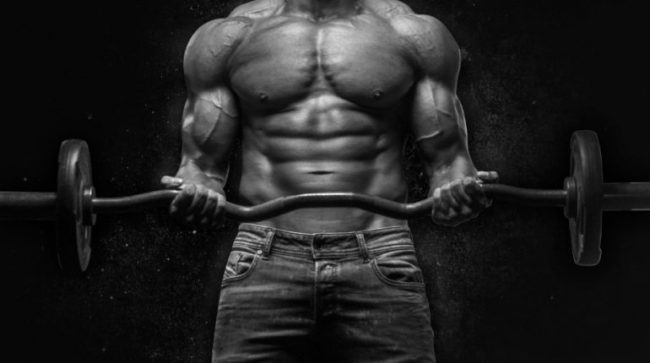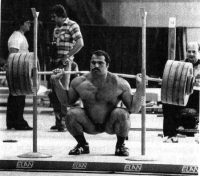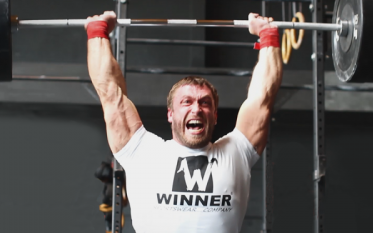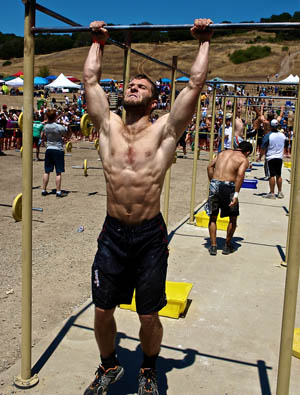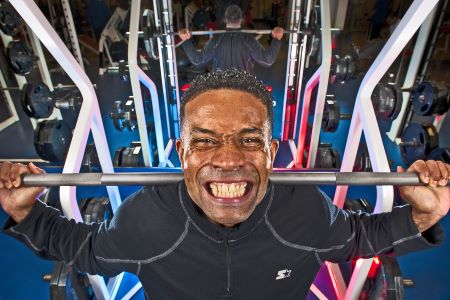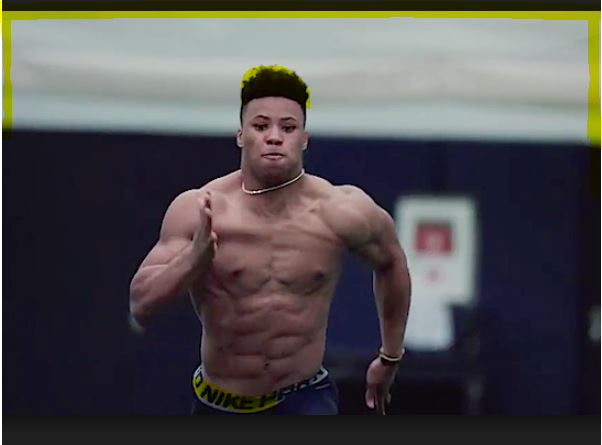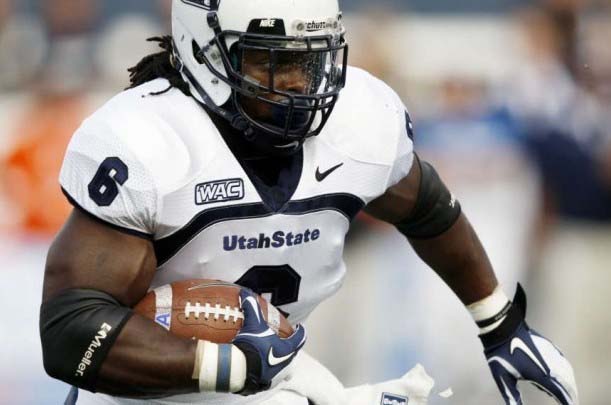Have you ever hit a training plateau?
You’ve been lifting weights for a while, getting stronger, then all of the sudden you stop making gains.
This could be because your body has gotten used to your routine and has adapted to the way you are training.
It could also mean that you haven’t been consistent enough in your routine to make the gains you are hoping for.
To avoid this you need to map out your program in order to track progression and continue to get stronger and make gains. Lifters that are more advanced have already built a strong foundation muscle and strength after years of training so they may not need to follow a periodization model.
New lifters, on the other hand, could greatly benefit from such a plan.
That is why today we are going to give you this simple guide to periodization for muscle building..
Related: A Complete Guide To Building Muscle Fast
What is Periodization?
Periodization is simply the organization and planning of your training. In sports, this planning is usually based on achieving maximum physical abilities so you can dominate on the field, court, mat, etc. For a given competition or period of competitions. In bodybuilding, the training might be organized around a particular bodybuilding event.
Most bodybuilders actually plan or by instinct “periodize” their training in line with a certain set of goals like building muscle or losing fat or even helping a lagging body part.
In general, if you have a goal you want to meet by a specific time then essentially you are using periodization. There are lots of ways that someone could use periodization, but we will keep it really simple and gear it towards the physique athlete.
Here are four common terms for the different stages that are involved in modern periodization.
- Training unit- Refers to the given workout on a given day
- Microcycle- This usually refers to a week of training
- Mesocycle- This refers to a longer period of training, typically 2-4 months
- Macrocycle- This is the larges unit and it usually refers to 1-4 years
The phases of periodization that athletes use are:
- General Physical Preparedness
- Strength
- Power
- Peaking
- Active rest or Transition Phase
This model is perfect for high-level athletes such as Olympians or pro athletes but does not work as well for physique athletes and bodybuilders. To be honest, many of the traditional periodization models don’t work very well when it comes to bodybuilders and the like. This is because they don’t really focus on muscle building or fat loss as much as is needed for a bodybuilder.
We will focus on a simple bodybuilding periodization phase.
A Simple Periodization Method For Muscle Building
If you are looking to improve your physique you probably have a few goals. Increase your strength, add some muscle and reduce your body fat. This means we need only 3 different set, load and rep schemes to keep the progress going and to keep making gains.
The 3 phases we will be using are:
- Hypertrophy Phase
- Maximal Strength Phase
- Dynamic Effort Phase
The Hypertrophy Phase
This is definitely the method most commonly used in bodybuilding training and it usually involves the parameters below. It uses the traditional reps and sets you see most people using in the gym.
- Rep range – 8-15
- Number of sets – 3-5
- Weight used (load) – 60-80% 1 rep max
- Rest periods: 1-3 minutes
- Duration: 4-6 weeks
The kind of training leads to a type of muscle hypertrophy known as “sarcoplasmic hypertrophy”. This is the period that you will spend the majority of your time in but it won’t work forever. Your body will adapt and you will stop seeing results so you will need to move on to something else. That is where the next phase comes in which is all about getting stronger.
Related: 12-Week Hypertrophy Cycle to Build Athletic Muscle
Maximal Strength Phase
The Maximal Strength Method is the method that is generally used by weightlifters and powerlifters looking to build strength and it works. In this phase, you will be using heavy weights for a lower number of reps and you will be doing more sets along with longer rest periods. The parameters are as follows:
- Rep range: 1-5
- Number of sets: 5-10
- Weight used (load): 85-100% of 1 rep max
- Rest periods: 3-7 minutes
- Duration: 2-4 weeks
Since our main goal is to build muscle and burn fat we will keep the duration of time spent in this phase short, but still long enough to make nice gains and adaptations.
Improved neuromuscular recruitment will involve muscle fibers, which increase strength. This kind of hypertrophy is associated with maximal strength training is often referred to by the muscle nerds as “myofibrillar hypertrophy.”
Learn more about Maximal Strength Training in our article The Maximal Effort Method: Building Stronger Athletes
Dynamic Effort Phase
The Dynamic Effort Method is a very common training method for athletes but is not as well known among the bodybuilding crowd.
This method will help lifters increase their speed when lifting which increases muscle tension and also teaches the nervous system how quickly recruit muscle fibers when needed. We use lighter weights with this method but the key is to perform the reps very quickly to build explosive power.
Here are the most common workout parameters for the dynamic effort method of training:
- Rep range: 1-5
- Number of sets: 6-10
- Weight used (load): 50-70% of 1 rep max
- Rest periods: 45-90 seconds
- Duration: 2-4 weeks
The length of this phase is also rather short. When this phase is over, you will notice that you have more explosiveness and strength when you resume your regular bodybuilding hypertrophy type of training. Note that during this phase the weights will likely feel lighter than usual, but should be moved very quickly to recruit the right muscle fibers and create higher levels of muscle tension.
Learn more about this method in our article The Dynamic Effort Method: Building Explosive Athletes
Periodization for Muscle Building Conclusion
Below is a common periodization for beginner bodybuilders and muscle building that works pretty well:
Hypertrophy Phase: 6-weeks
Maximal Strength Phase: 2-weeks
Dynamic Effort Phase: 2-weeks
Repeat
This will work to keep your muscles from adapting to the same routine and will help you make gains in muscle size and also strength.

Ryan is a former college wrestler and lifelong fitness fanatic with over 25 years in the industry. He’s run half marathons, tackled mud runs, placed in body transformation contests, and coached everything from wrestling to girls’ soccer.
Along the way, he’s tested hundreds of supplements and built a deep well of supplement knowledge. His work has appeared in Muscle & Strength, Testosterone Junkie, The Sport Review, and more. Today, he’s the editor-in-chief of this site, still training hard and helping others reach their goals. Connect with him on LinkedIn below.


